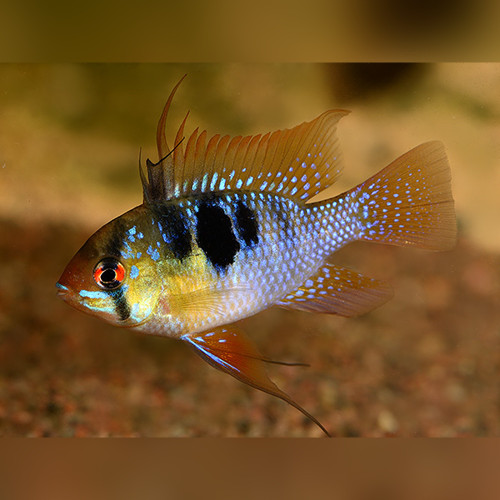Our Guide To Keeping Redstriped Eartheater Fish
-
About Fish Species:
- Scientific name: Geophagus surinamensis
- Common name: Redstriped Eartheater
- Family: Cichlidae
- Origin: South America (Amazon River Basin)
- Adult length: 15 cm
- Lifespan: 10 to 12 years
-
Tank Setup:
- Redstriped Eartheaters require a spacious tank with a sandy substrate, as they love to sift through the sand. A minimum tank size of 200L is recommended for a pair or small group.
- Include plenty of hiding spots with rocks, driftwood, and hardy plants like Java Fern and Anubias, as they may uproot delicate plants.
-
Water Parameters:
- Redstriped Eartheaters thrive in slightly acidic to neutral water conditions with a pH range of 6.0 to 7.5.
- Keep the water temperature between 24 to 28°C (75 to 82°F).
-
Filtration and Water Flow:
- Moderate water flow is suitable for these fish. Use a filter that provides gentle to moderate flow to replicate their natural habitat.
-
Diet:
- Redstriped Eartheaters are omnivores and will accept a variety of foods. Provide a balanced diet consisting of high-quality flake or pellet food as a staple.
- Supplement their diet with live or frozen foods like bloodworms, brine shrimp, and daphnia to provide essential nutrients and mimic their natural diet.
- They also enjoy plant-based foods like blanched spinach and spirulina flakes.
-
Tank mates:
- Redstriped Eartheaters are generally peaceful and can be kept with other non-aggressive fish. Avoid housing them with very small fish that they might see as food.
- They are compatible with other peaceful cichlids, larger tetras, and catfish species like Corydoras.
-
Behavior and Compatibility:
- Redstriped Eartheaters are active diggers and will constantly sift through the substrate in search of food. Provide them with a sandy bottom to support this natural behavior.
- They are relatively peaceful but can be territorial during breeding. Ensure there is enough space and hiding spots to reduce aggression.











